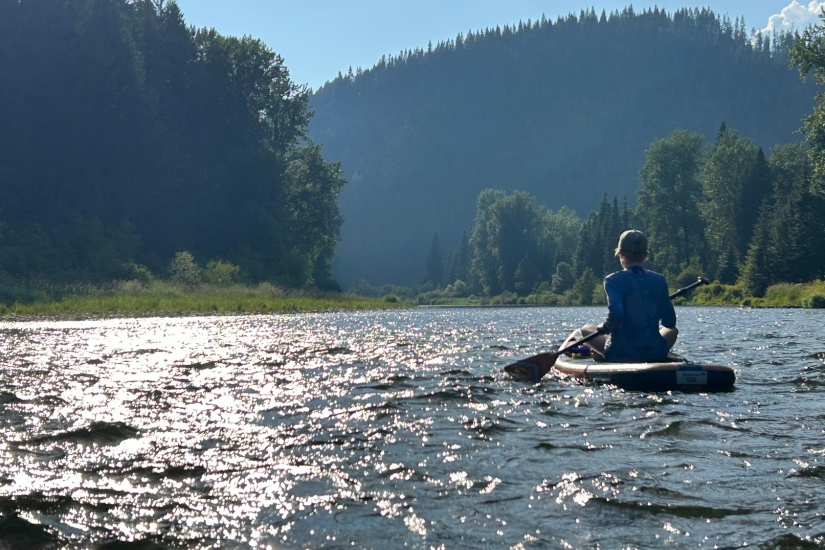
Celebrating 60 Years of the Wilderness Act
Protecting Our Wild Spaces for Future Generations
This year marks a significant milestone in the history of conservation. Sixty years ago, on September 3, 1964, the National Wilderness Preservation System was signed into law by President Lyndon B. Johnson, forever changing the way we approach the preservation of our natural world. The Wilderness Act, a cornerstone of environmental protection, took eight years to pass, enduring 65 rewrites and 18 public hearings, but it ultimately became a monumental achievement in safeguarding our wild places.
At its core, the Wilderness Act is about protecting nature in its purest form. The law aims to keep ecosystems, wildlife, and natural landscapes free from human interference and development. By doing so, it ensures that future generations can experience the untamed beauty of wilderness through activities like hiking, camping, horseback riding, fishing, and paddling in canoes or kayaks—without the intrusion of mechanized tools or vehicles.
However, the wilderness that the act protects is fragile and rare. Today, wilderness areas make up less than 3% of the contiguous United States, and only about 5% when you include Alaska. The 112 million acres preserved under this act are a precious resource, but they are constantly under threat from various special interest groups.
Threats to Wilderness Preservation
In recent years, there has been increasing pressure from recreational groups and industries looking to exploit these wild spaces. Legislation in several states seeks to allow activities that are currently prohibited under the Wilderness Act, including the use of mechanized transportation like mountain bikes, snowmobiles, and even electric bikes. Rock climbers are pushing for permission to drill permanent metal “fixed anchors” into wilderness rock faces, a practice that directly conflicts with the untouched, pristine nature of these landscapes.
These groups are not advocating for wilderness—they are advocating for recreation, often in places that are legally protected and designated for preservation. Public lands, accessible for countless other recreational activities, are already available in abundance. Yet, the push to invade wilderness areas with mechanized and motorized tools continues.
Beyond recreational interests, industries like mining, timber, and agriculture are vying for greater access to wilderness areas. These industries, which often already operate on public lands at minimal cost, are looking for ways to expand into untouched territories, threatening the ecosystems and biodiversity that the Wilderness Act was designed to protect.

The Importance of Wilderness Protection
The Wilderness Act was not just about preserving land—it was about preserving the balance between human desires and the natural world. Wilderness provides a refuge not only for wildlife but for humans seeking respite from our busy, materialistic lives. It safeguards vital watersheds and maintains biodiversity, which are essential to the health of our planet and all who depend on it.
Wild places like the Selkirk Mountains and the Frank Church–River of No Return Wilderness here in Idaho offer serenity and an opportunity to reconnect with nature, but they also serve a critical role in maintaining the health of the planet. The Wilderness Act allows these landscapes to exist free from human exploitation, providing habitat for wildlife and protecting ecosystems that are essential for clean air, water, and climate stability.
A Call to Action: Strengthening the Wilderness Act
Today, there are around 40 wilderness bills before Congress, many of which are aimed at weakening the protections offered by the original act. These bills propose amendments for various special interests, including wildlife manipulation, mechanized transportation, and resource extraction. Allowing these activities would open the door to irreversible damage.
The Wilderness Act was designed to protect our natural heritage, not just for today, but for future generations. As we reflect on 60 years of this landmark legislation, it is more important than ever to reaffirm our commitment to preserving these wild spaces. The threats to wilderness are real and ongoing, but with collective effort, we can ensure that these places remain untouched and protected for the wildlife that depends on them—and for all of us who seek solace in their quiet beauty.
As we move forward, let’s recommit to upholding the full intent of the Wilderness Act. Let’s push back against efforts to weaken its protections, and instead, work to strengthen it. Our wilderness areas are irreplaceable treasures, and once they are gone, they cannot be recreated. For the sake of our planet, our wildlife, and future generations, we must protect these lands from destruction.
